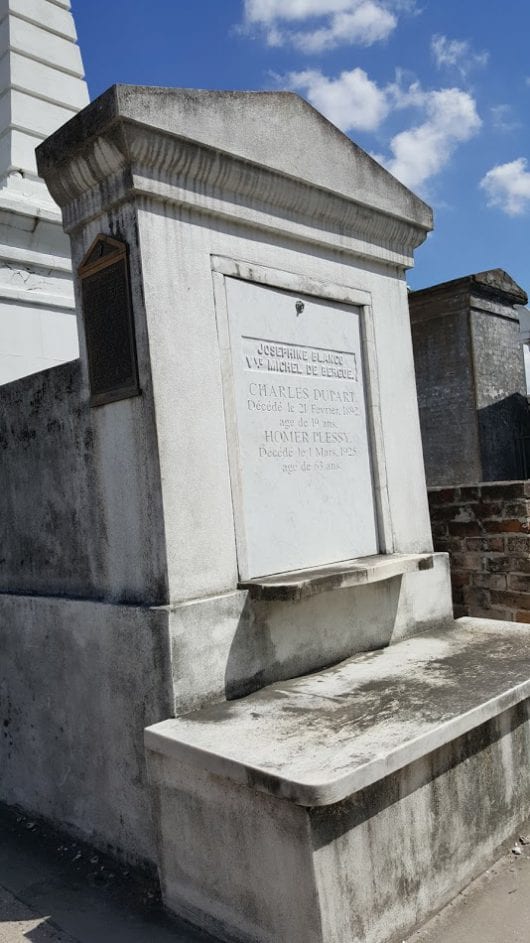Where to Visit Homer Plessy’s Tomb

Homer Plessy is one of many American heroes with ties to New Orleans. We have a school bearing his namesake, and his contributions to civil rights are celebrated in New Orleans and around the entire nation.
Plessy was born into a mixed-race family on March 17, 1862, here in New Orleans, Louisiana. For all intents and purposes at the time, his family was considered “white.” However, because his great-grandmother was black, he identified correctly as 1/8th black—which was gutsy in and of itself considering the deep racial issues that plagued the south post-Civil War.
Plessy became a social activist early in his life, working to reform the New Orleans public school system’s racism in the late 1880s.
In 1890 Louisiana passed the “Separate Car Act” (also called the “Withdraw Car Act”) among other laws segregating blacks and whites in the state. In response to Louisiana trying to comply with post-war Reconstruction regulations, which aimed to enforce equality among all people, with its desire to remain segregated. This particular act barred people of color from riding in the same streetcar carriages as whites. It was an act of “separate, but equal.”
In 1891, The Citizens’ Committee to Test the Constitutionality of the Separate Car Law was formed to test the Separate Car Act’s constitutionality. They first attempted to have a black man, Daniel Desdunes, ride the railroad in a whites-only car from Louisiana to Montgomery, Alabama. Because the Separate Car Act did not apply to interstate travel, nothing happened.
A year later, the 30-year old Plessy heightened his activism and worked alongside the Citizens’ Committee to start the test of the racist act. He bought a ticket on the East Louisiana Railroad for a trip within the state and purposely sat in the whites-only section of the train. He made it a point to state to the conductor that he was 1/8th black—which was considered non-white all the same in segregated Louisiana.
Plessy got kicked off the train, jailed for the night, and fined $500—Which was the goal.
Working within the court system, he protested that his rights under the 13th and 14th Amendments to the US Constitution were being violated. The case was known as “Plessy v. Ferguson” (Ferguson was the presiding judge of the lower court.) He was found guilty initially, but the case made it all the way to the Supreme Court in 1896.
What many may not know is that Plessy’s case in the Supreme Court actually upheld racial segregation, as long as non-whites were afforded facilities of “equal quality.” However, over the many decades after this decision, this case was used as a linchpin for other cases that eventually helped erode segregation in the United States, and especially The South.
If you want to see a part of history, Unique NOLA Tours can help! For starters, our St. Louis #1 Cemetery Tour will take you to Homer Plessy’s tomb, where you’ll learn more about him and his place in American history.
As well, with a 10-minute drive from the cemetery, you can visit the location in New Orleans where Plessy was stopped and arrested on the train. We’ll show you the way.
We at Unique NOLA take pride in our tours’ research and historical accuracy, and we think you’ll appreciate the variety of ways we present New Orleans history with our tours. Join us today for a walking tour of New Orleans!






